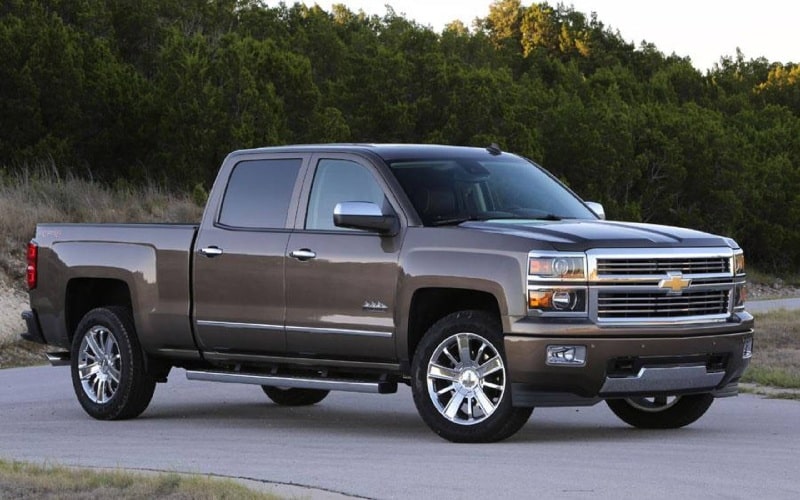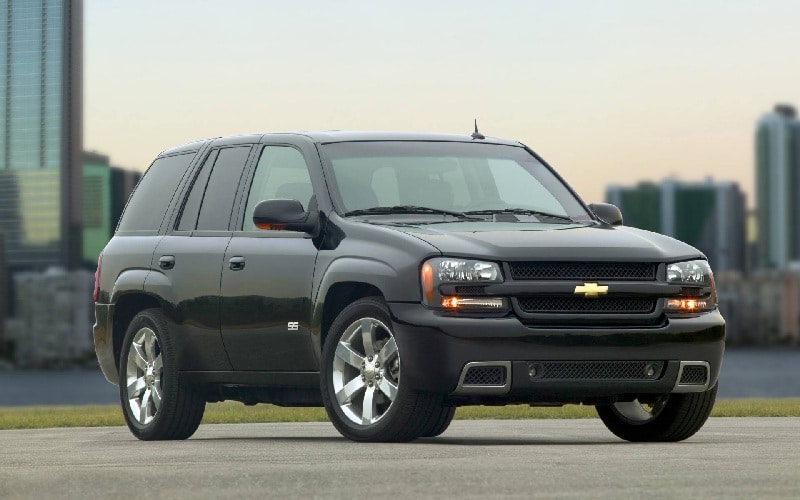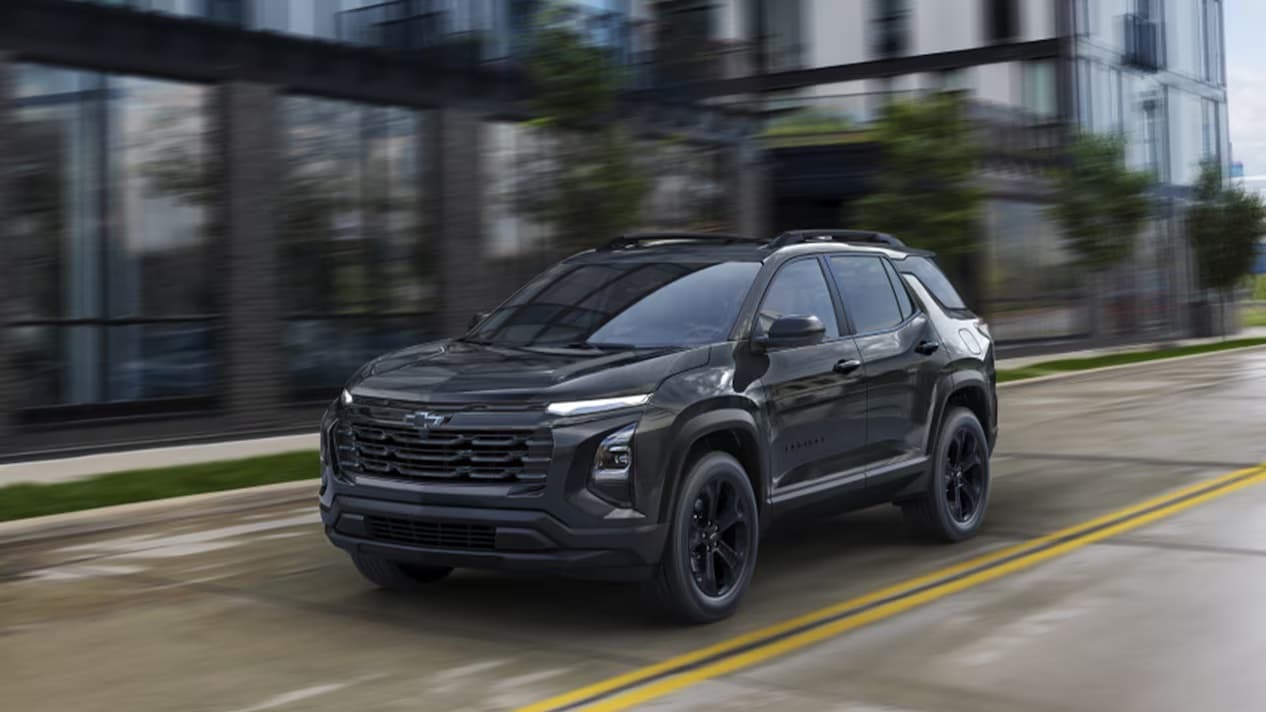2014 Chevy Silverado Cooling Fan: The Dealership Advantage
The Chevrolet Silverado is renowned for its reliability and performance, but like any complex vehicle, it can experience specific mechanical issues. One common problem that owners of older models might encounter is a cooling fan that continues to run after the engine has been shut off, or that operates continuously during normal driving conditions. This […]
The Chevrolet Silverado is renowned for its reliability and performance, but like any complex vehicle, it can experience specific mechanical issues. One common problem that owners of older models might encounter is a cooling fan that continues to run after the engine has been shut off, or that operates continuously during normal driving conditions. This article explores the potential causes of this problem, explains why a Chevrolet dealership is often the best choice for repairs, and highlights the importance of using Original Equipment Manufacturer (OEM) parts to maintain your truck’s performance and longevity.

The Cooling System in Your 2014 Silverado
Before diving into the potential issues, it’s essential to understand how the cooling system works in a Silverado. The system consists of several interconnected components:
- Radiator: The primary heat exchanger, typically measuring approximately 70 cm wide and 50 cm tall
- Cooling fans: Dual electric fans that move air through the radiator
- Coolant temperature sensor: Monitors engine temperature and sends data to the Engine Control Module (ECM)
- Thermostat: Regulates coolant flow to maintain optimal engine temperature
- Water pump: Circulates coolant throughout the engine
- ECM: The computer that controls cooling fan operation based on temperature sensor data
- Coolant reservoir: Stores excess coolant, typically holding about 4.7 litres of fluid
In normal operation, the ECM activates the cooling fans when the engine reaches approximately 95°C, and they should turn off when the temperature drops to an acceptable level or shortly after the vehicle is shut down.
Common Causes of Continuous Cooling Fan Operation
When your Silverado cooling fan stays on after shutdown or runs continuously, several components could be at fault:
1. Faulty Coolant Temperature Sensor
The coolant temperature sensor is a primary suspect in these cases. When this sensor malfunctions, it may send incorrect temperature readings to the ECM. If the sensor falsely indicates that the engine is overheating, the ECM will keep the cooling fans running as a protective measure.
Symptoms of a failed temperature sensor include:
- Engine temperature gauge reading unusually low (around 75°C) or high
- Cooling fans running when the engine is cold
- Fans continuing to run for extended periods after shutdown
- Check engine light illumination
2. Thermostat Issues
The thermostat regulates coolant flow through the engine. A stuck-open thermostat can prevent the engine from reaching optimal operating temperature, while a stuck-closed thermostat can cause overheating.
Signs of thermostat problems include:
- Engine taking longer than normal to warm up
- Temperature gauge reading lower than the normal operating range
- Cooling fans cycling on and off more frequently than usual
- Overheating during normal driving conditions
3. ECM Problems
The Engine Control Module manages various systems in your Silverado, including the cooling fans. Software glitches, electrical shorts, or damaged circuits within the ECM can cause the cooling fans to operate irregularly.
Indications of ECM issues include:
- Multiple electrical systems malfunctioning simultaneously
- Erratic fan behaviour that resolves temporarily after disconnecting the battery
- Check engine light with related diagnostic trouble codes
- Inconsistent engine performance
4. Relay Failure
The cooling fan relay acts as a switch that the ECM uses to turn the fans on and off. When this relay fails in the “closed” position, the fans may continue to run regardless of engine temperature.
Signs of relay failure include:
- Fans running immediately upon starting the vehicle, even when cold
- Fans continuing to run after shutdown until the battery is disconnected
- Blown fuses related to the cooling system
5. Wiring Issues
Damaged or corroded wiring in the cooling system circuit can cause various electrical issues, including continuous fan operation. Salt exposure during winter months can accelerate wire corrosion in these vehicles.
Symptoms of wiring problems include:
- Intermittent fan operation
- Fans operating at improper speeds
- Electrical issues in other vehicle systems
- Visible corrosion at connection points
Why a Chevrolet Dealership is Recommended for This Issue
While general repair shops can address some vehicle issues, there are several compelling reasons to choose a Chevrolet dealership when dealing with cooling fan problems in your older Silverado:
1. Specialized Diagnostic Equipment
Chevrolet dealerships have model-specific diagnostic tools designed to communicate effectively with your Silverado computer systems. The proprietary Tech2 and GDS2 diagnostic systems can identify issues that generic OBD-II scanners may miss, particularly those related to the complex management of the cooling system.
These advanced diagnostic tools can simultaneously read and interpret data from multiple control modules, providing a comprehensive view of how the cooling system functions and interacts with other vehicle systems.
2. Factory-Trained Technicians
Dealership technicians receive specialized training directly from Chevrolet on the specific systems in your Silverado. This training includes detailed information about:
- Common failure points in the older model year cooling systems
- Proper diagnostic procedures for electrical system issues
- Technical service bulletins that may apply to your specific vehicle
- Correct installation procedures for cooling system components
A technician who works exclusively on Chevrolet vehicles will likely have encountered similar cooling fan issues multiple times before and will be familiar with the most efficient troubleshooting approaches.
3. Access to Technical Service Bulletins
Chevrolet regularly issues Technical Service Bulletins (TSBs) that provide updated repair procedures and information about known issues. Dealerships have immediate access to these bulletins, which may include specific information about cooling fan problems in older Silverados.
For example, some older Silverados were subject to a TSB regarding temperature sensor calibration that could cause cooling fan issues—information that might not be readily available to independent shops.
4. Warranty Considerations
If your Silverado is still covered under any type of warranty or extended service plan, having repairs performed at a dealership helps ensure that your coverage remains intact. Unauthorized repairs at independent shops might potentially void certain aspects of your warranty protection.
5. Comprehensive System Knowledge
The cooling system in a modern Silverado interacts with multiple vehicle systems, including the air conditioning, transmission cooling, and engine management systems. Dealership technicians understand these relationships and can identify when a cooling fan issue might be symptomatic of a larger problem.
Critical Parts Involved in Cooling Fan Operation
When diagnosing and repairing cooling fan issues in a Silverado, several key components typically require inspection:
1. Coolant Temperature Sensor
This small but crucial sensor threads into the engine block or cylinder head and measures coolant temperature. On the 5.3L V8 engine commonly found in Silverados, this sensor is typically located near the thermostat housing and connects to the wiring harness with a two-wire connector.
2. Cooling Fan Assembly
The Silverado uses a dual-fan assembly mounted in front of the radiator. Each fan is powered by its own electric motor, and both are contained within a plastic shroud that helps direct airflow through the radiator. The entire assembly can measure approximately 70 cm across and 40 cm in height.
3. Cooling Fan Relay
This electronic component is in the fuse/relay box, either under the hood or in some cases inside the cabin. The relay receives signals from the ECM and controls the power supply to the cooling fans.
4. Engine Control Module (ECM)
While not always the culprit, the ECM itself may require reprogramming or replacement if it’s incorrectly managing the cooling fans. The ECM is typically located under the dashboard on the passenger side or under a cover in the engine compartment.
5. Thermostat and Housing
The thermostat regulates coolant flow based on temperature. In the Silverado, it’s usually in a plastic or aluminum assembly connected to the engine block, often on the passenger side of the engine.
6. Wiring Harness
The wiring harness carries electrical signals between components of the cooling system. Damage to this harness can cause various electrical issues, including continuous fan operation.
Why OEM Parts Are the Best Option for Your Silverado
When repairing cooling system issues in your Silverado, using Original Equipment Manufacturer (OEM) parts offers several significant advantages:
1. Exact Specification Matching
OEM parts are manufactured to the exact specifications used in your truck when it was built. For critical components like the coolant temperature sensor, even minor variations in calibration can affect how the ECM interprets engine temperature data and controls the cooling fans.
For example, an OEM temperature sensor signals the ECM to activate the fans at precisely 95°C. Aftermarket sensors may activate at slightly different temperatures, causing the fans to run more frequently or less often.
2. Material Quality and Durability
Chevrolet OEM parts are manufactured using materials specifically selected for the operating conditions of your Silverado. This is particularly important for cooling system components that must withstand extreme temperature cycles and exposure to corrosive coolant.
The plastic used in OEM fan assemblies, for instance, contains specific heat-stabilizing compounds to prevent warping under the high temperatures experienced in the engine compartment.
3. System Integration
The cooling system in a modern Silverado functions as an integrated whole, with components designed to work together seamlessly. OEM parts maintain this integration, ensuring that replacement components communicate properly with existing systems.
This is especially important for electronic components such as the coolant temperature sensor, which must provide data in the precise format expected by the ECM to properly control the cooling fans.
4. Warranty Protection
OEM parts typically come with a comprehensive warranty that covers not only the part itself but sometimes the labour for its installation. This warranty protection provides peace of mind that aftermarket alternatives often cannot match.
5. Simplified Selection Process
With OEM parts, there’s no need to research which of several aftermarket options might work best in your specific truck. The OEM part is guaranteed to be the correct component for your exact specifications and build date.
2014 Chevrolet Silverado: Keep Your Truck In Top Condition
A continuously running cooling fan in a Chevrolet Silverado can stem from various causes, ranging from a simple sensor failure to more complex electronic issues. While the problem might seem minor, it can lead to accelerated battery drain, unnecessary wear on cooling system components, and potential damage to the electrical system if left unaddressed.
Choosing a Chevrolet dealership for diagnosis and repair offers significant advantages, including access to specialized diagnostic equipment, factory-trained technicians, and comprehensive system knowledge. Combined with the use of OEM parts, this approach provides the most reliable and long-lasting solution to cooling fan issues.
By understanding the potential causes and ideal solutions for this problem, Silverado owners can make informed decisions about maintaining their trucks and preserving the performance and reliability that Chevrolet vehicles are known for.
5 Cooling Fan Facts
- The Silverado cooling fan activation after engine shutdown is a normal safety feature called “heat soak protection.” This system detects elevated underhood temperatures after heavy loads or hot-weather driving and automatically runs the fan to prevent component damage, ensuring your truck’s longevity even in demanding conditions.
- A continuously running Silverado cooling fan draws between 15-25 amps, potentially draining a healthy battery within 4-5 hours. Understanding this power consumption helps you make informed decisions about vehicle storage and maintenance, particularly when your truck might sit unused for extended periods.
- Extreme temperatures below -30°C can affect coolant temperature sensors or cause thermostats to stick in your Silverado. These winter conditions may trigger unnecessary fan operation due to incorrect temperature readings, explaining why cooling system issues are more commonly reported during the coldest months.
- When cooling fans operate unnecessarily, they create additional load on your Silverado alternator. This increased workload translates to approximately 0.5-1.0 litres of additional fuel consumption per 100 kilometres during city driving, affecting both your wallet and environmental impact.
- Newer generation Silverados feature sophisticated variable-speed cooling fans that operate at multiple speeds rather than simply turning on or off. This advanced technology delivers more precise temperature control while reducing noise and power consumption by up to 30% compared to older models, providing a more efficient and refined driving experience.
Frequently Asked Questions
What are the warning signs that my Silverado cooling fan issue is serious?
- If your cooling fan runs continuously along with an illuminated check engine light, abnormal temperature gauge readings, engine overheating, or battery drain, the issue requires immediate attention. These symptoms suggest the problem goes beyond normal operation and could lead to engine damage or leave you stranded with a dead battery.
Can I drive my older Silverado if the cooling fan stays on after shutdown?
- While you can drive the vehicle short distances, a continuously running cooling fan will drain your battery if the truck sits for extended periods. Additionally, the underlying cause could be related to a more serious cooling system issue that might affect engine temperature management during operation, potentially leading to overheating or engine damage.
How long should cooling fans normally run after shutting off an older Silverado?
- Under normal circumstances, cooling fans may run for 1-3 minutes after shutdown to reduce underhood temperatures, particularly after heavy loads or driving in hot weather. Any operation beyond 5 minutes is generally considered abnormal and indicates a potential problem with the cooling system.
Will a coolant flush help resolve cooling fan issues in my Silverado?
- While a coolant flush won’t directly fix an electrical or sensor issue causing the fans to run continuously, contaminated or degraded coolant can contribute to thermostat problems and sensor inaccuracies. Flushing the system with the correct formulation of Dex-Cool coolant and proper bleeding of air from the system can sometimes resolve temperature-sensing issues.
How do dealership repairs for cooling fan issues differ from independent shop repairs?
- Dealership repairs typically involve comprehensive system diagnostics using Chevrolet-specific tools that can access all control modules. They follow factory-prescribed procedures and use OEM parts, which are guaranteed to match your Silverado specifications. Independent shops may use generic diagnostic tools with limited access to certain systems. They might install aftermarket parts that may not precisely match the original specifications, potentially leading to recurring issues.
*Disclaimer: Content contained in this post is for informational purposes only and may include features and options from US or international models. Please contact the dealership for more information or to confirm vehicle, feature availability.*


